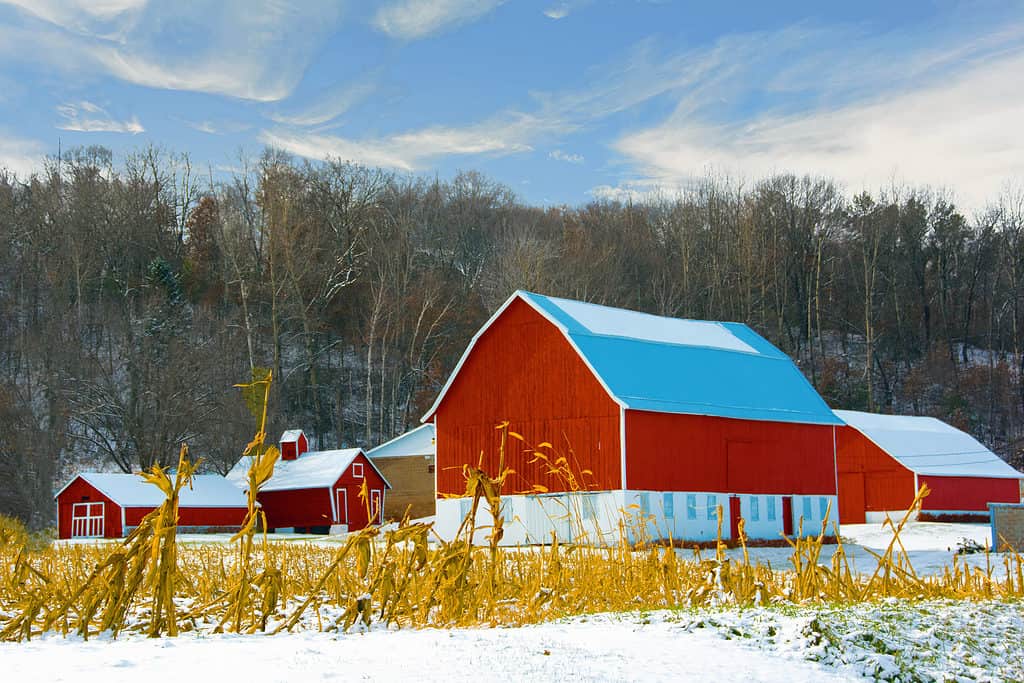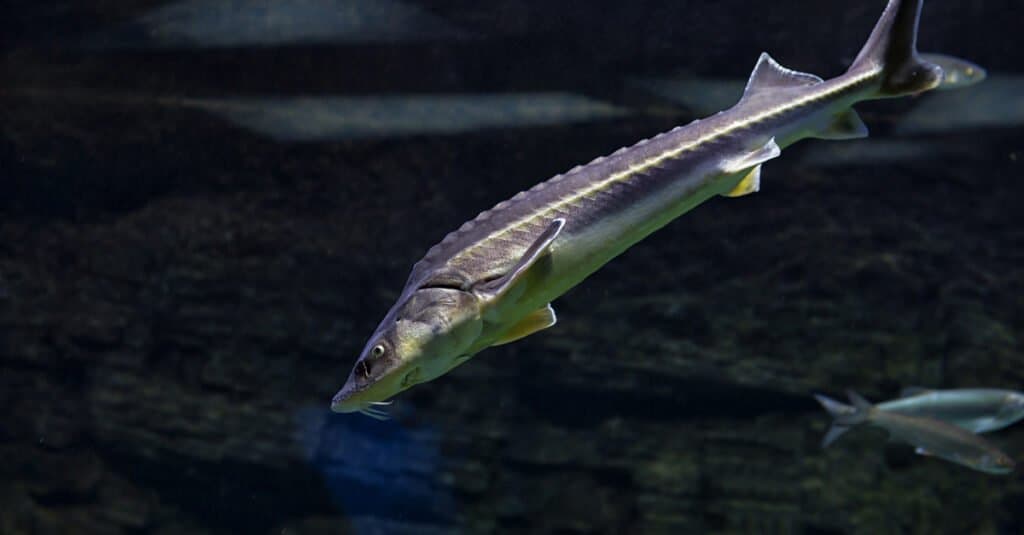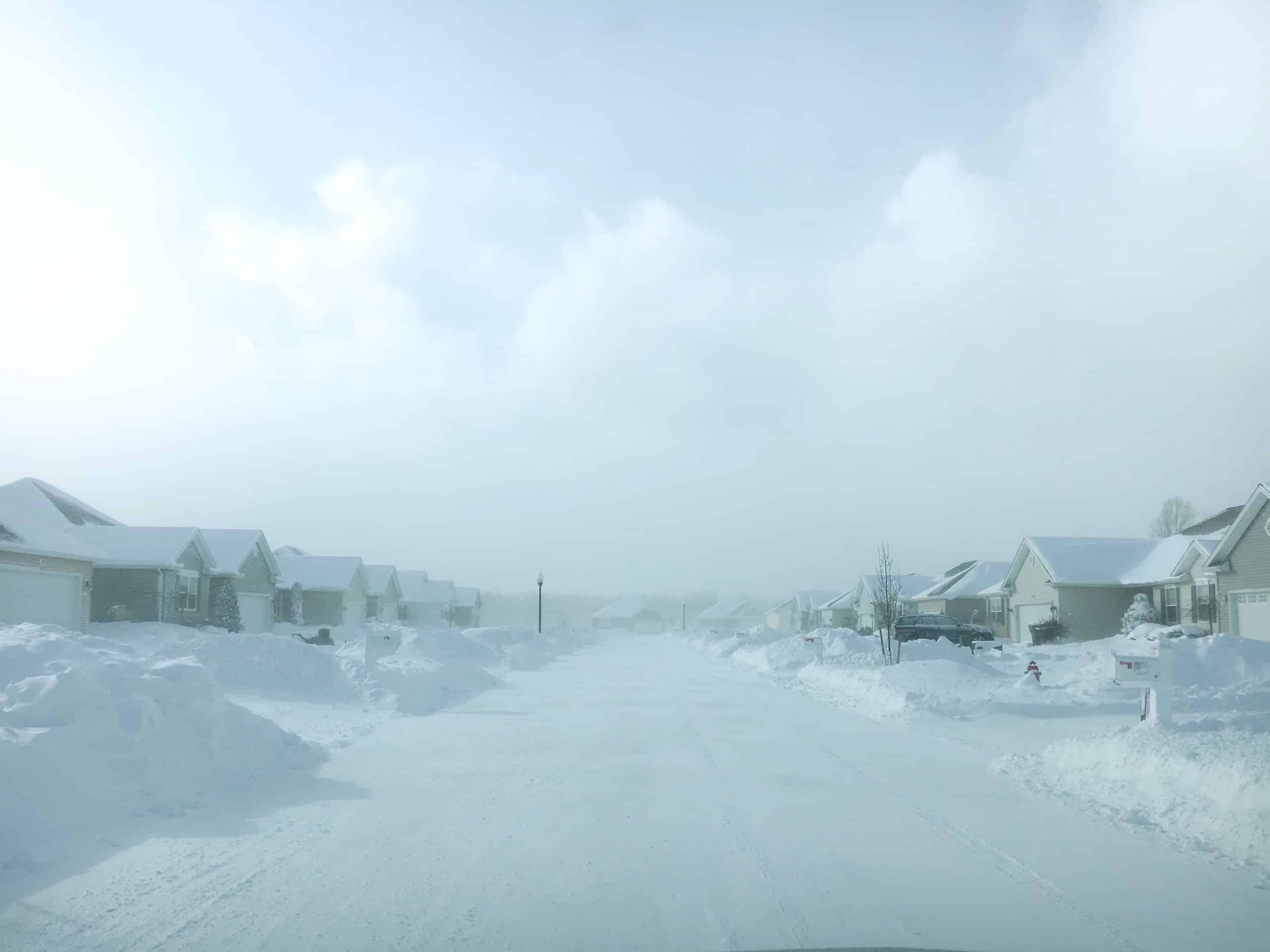Wisconsin is easily one of the coldest states in the US. On the border of the coldest of the Great Lakes, Lake Superior, and only a few miles from the Canadian border, Wisconsin always gets a few cold arctic blasts each year, accompanied by a fair amount of snow. Today, we are going to see just how cold Wisconsin can get during the winter, particularly in the month of January. Let’s discover Wisconsin’s coldest January on record!
The Coldest January on Record

In January 1951, the temperature in Wisconsin was as low as -45°F.
©iStock.com/William Reagan
It’s hard to believe that it can get as cold as does in Wisconsin, but the state has seen some of the coldest January temperatures on record in the country. In January 1951, Eau Claire and Madison were hit with a winter storm that brought temperatures down to a staggering -45°F and -37°F degrees respectively. This extreme cold snap was a rare occurrence, but it’s not uncommon for temperatures in Wisconsin to drop to -40°F or lower during the winter months. In fact, almost every winter sees temperatures of -30°F or lower in the northern parts of the state.
But the cold doesn’t last forever in Wisconsin. During the summer, temperatures can climb to 90°F or higher for a few days in the northern counties, and for about two weeks in the southern parts of the state. However, even in the summer, Wisconsin can experience cool outbreaks that bring freezing temperatures to the central lowlands.
The most recent January weather (2022) threatened to unseat the record year of 1951, but it was just a few degrees shy. For most Wisconsinites, that is a record that they are happy to keep unbroken for as long as possible!
The Coldest Month in Wisconsin Each Year
Like most places in the northern United States, the coldest month of the year in Wisconsin is January. If you’re not a fan of the cold, you may want to avoid Wisconsin during this month. January is known for being the coldest of the year, with average high temperatures hovering around 28°F and low temperatures averaging around 16°F. While these temperatures may not seem too extreme on their own, they can feel much colder when combined with the strong winds that often accompany Wisconsin’s winter weather.
How Much Snow Does Wisconsin Get?
Wisconsin can get a lot of snow each year. This is partly due to the “lake effect,” which occurs when cold air passes over the relatively warmer waters of the Great Lakes, leading to increased snowfall. On the east and southwest ends of Wisconsin, the average snowfall per season is around 45 inches. However, in areas bordering the Great Lakes, the snowfall is significantly higher. For example, on the shore of Lake Superior, Wisconsin can see up to 100 inches of snow in a single season. It’s no surprise that the Midwest is known for its tough winters, and Wisconsin is no exception, especially when it comes to snow.
The Cold-Hardy Wildlife of Wisconsin

Lake sturgeons are well-suited for life in cold water.
©Galina Savina/Shutterstock.com
Wisconsin is home to a diverse array of wildlife, including many species that have adapted to survive the state’s cold winters.
One such species is the lake sturgeon, a fish that can be found in the Great Lakes and the Mississippi River. Lake sturgeons are well-suited for life in cold water, thanks to their thick skin and a layer of fat that helps to insulate their bodies. They are also able to survive in low-oxygen environments, which allows them to thrive in the deep, cold waters of Wisconsin’s lakes and rivers. In fact, Wisconsin is home to two species of sturgeon, the lake, and shovelnose sturgeon.
Another species that has adapted to the cold is the white-tailed deer, a common mammal in Wisconsin. White-tailed deer have thick fur coats that keep them warm in the winter, and they are able to survive on a diet of twigs, bark, and other woody plants when their preferred food sources are scarce. They are also skilled at finding shelter and bedding down together in freezing temps. Other common mammals with great winter adaptations include the fisher, marten, and even the Canada lynx.
Wisconsin is also home to a variety of plants and trees that are able to withstand the cold temperatures of the winter months. The white pine, for example, is a common tree in Wisconsin’s forests. Its long, flexible needles are able to withstand heavy snowfall and strong winds, making it well-suited for life in the cold. The American cranberry is another plant that thrives in Wisconsin’s cold climate. This small, hardy shrub is able to survive in wet, marshy areas, and its bright red berries are a staple of Wisconsin’s cranberry industry.
Up Next:
Thank you for reading! Have some feedback for us? Contact the AZ Animals editorial team.








